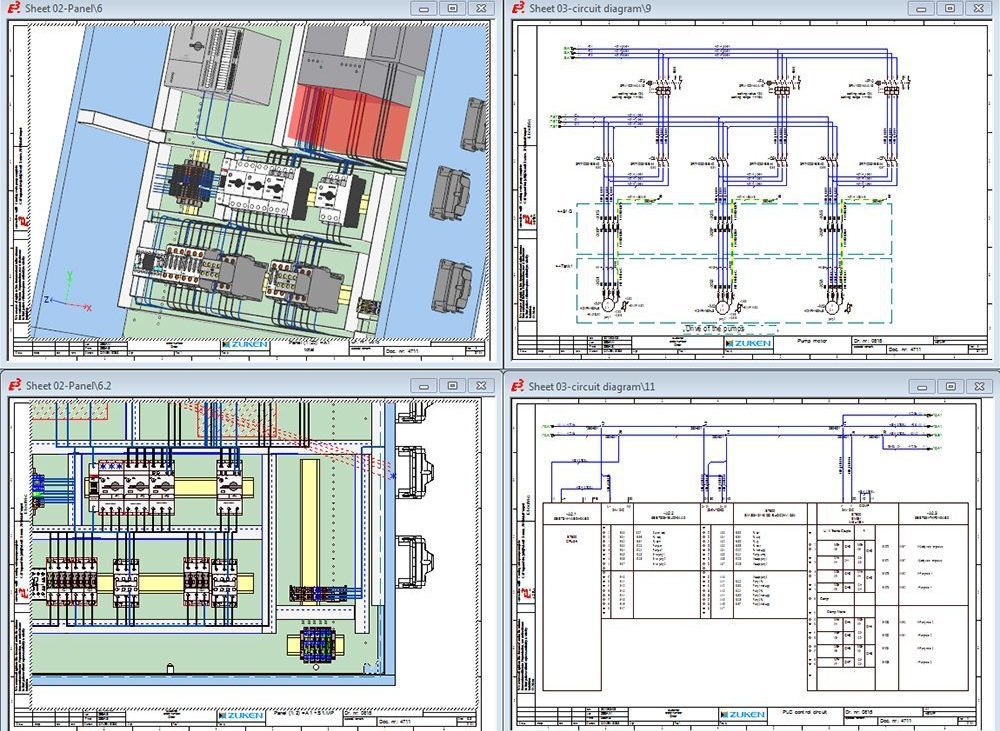Innovative Electric Design Solutions for Modern Infrastructure
The evolution of modern-day framework requires cutting-edge electric design services that not just improve operational efficiency yet likewise address sustainability challenges. As urban environments expand progressively complex, including modern technologies such as wise grids and sustainable energy sources comes to be extremely important. These innovations not only promise to maximize energy intake however also foster durability against future needs. Nevertheless, the landscape of electric design is undergoing fast change, motivating a better examination of arising trends and their effects for long-term framework practicality. What might the future hold for those that welcome these ingenious approaches?
Value of Innovative Electrical Design
Ingenious electric design plays an essential role in modern infrastructure, influencing not just efficiency but additionally sustainability. As cities progress and the demand for power rises, the need for innovative electrical systems ends up being critical. These systems have to not just fulfill existing needs but likewise prepare for future development and technological developments.
A well-executed electrical design can substantially minimize energy consumption, consequently reducing functional prices and minimizing ecological influence. By integrating renewable resource resources, such as solar panels and wind turbines, cutting-edge styles can enhance power freedom and durability. Furthermore, smart grid modern technologies enable for real-time tracking and management of power distribution, maximizing efficiency and decreasing waste.
Safety is an additional critical facet of electrical design. Executing advanced innovations and rigorous requirements can mitigate dangers connected with electric failings, making sure a secure atmosphere for residents and services alike. In addition, ingenious layouts facilitate versatility, permitting infrastructures to integrate arising technologies seamlessly.
Secret Fads in Electrical Design
As the landscape of electrical design proceeds to evolve, a number of vital trends are forming the future of the industry. One considerable pattern is the assimilation of smart technology into electric systems. The spreading of the Internet of Things (IoT) has actually allowed real-time surveillance and control of electrical gadgets, improving performance and facilitating predictive maintenance.
An additional fad is the growing emphasis on modular design. This method enables for scalable and adaptable remedies, making it possible for framework to adapt to changing needs without comprehensive remodellings. Furthermore, making use of sophisticated simulation devices and Structure Info Modeling (BIM) is becoming significantly common, enhancing the design process and improving partnership among stakeholders.
Furthermore, developments in products scientific research are bring about the growth of lighter, a lot more long lasting, and energy-efficient elements. This advancement is particularly important for high-performance structures and framework jobs.
Finally, there is a marked change in the direction of data-driven decision-making - electrical engineering design services. Leveraging information analytics aids designers optimize systems for efficiency and cost-effectiveness. Together, these fads represent a transformative period in electric design, enhancing capability, sustainability, and durability in modern framework
Sustainable Energy Solutions
Lasting energy solutions are significantly ending up being a vital emphasis in electrical design, showing a more comprehensive commitment to ecological obligation and source effectiveness. These solutions intend to minimize ecological impact while enhancing power consumption in different infrastructures, from household buildings to big commercial facilities.
Among the foremost methods entails the assimilation of renewable resource sources, such as photovoltaic panels and wind turbines, into electric systems. This not only minimizes dependence on nonrenewable fuel sources but likewise boosts energy durability. In addition, innovative energy storage space systems, such as advanced batteries, allow efficient administration and circulation of energy, making sure that excess power generated during height manufacturing can be utilized throughout high need durations.
Moreover, energy-efficient design methods are being embraced to boost total system performance. This includes using energy-efficient illumination, heating and cooling systems, and clever structure technologies that keep track of and adapt power use based upon tenancy and environmental problems.
Smart Grid Technologies
The execution of lasting power remedies normally brings about the expedition of clever grid technologies, which play a pivotal function in improving electric systems. Smart grids utilize progressed interaction modern technologies and information analytics to improve the dependability, effectiveness, and sustainability of power circulation. By integrating electronic modern technology with typical grid framework, these systems promote real-time surveillance, automated control, and boosted decision-making abilities.
One of the essential features of wise grids is their capability to fit sustainable energy resources, such as solar and wind power. This flexibility not just decreases dependency on nonrenewable fuel sources yet likewise enables a more decentralized power production version. In addition, clever grids allow demand feedback programs, where customers can adjust their energy use based on real-time pricing, thereby advertising energy conservation and lowering peak tons demands.
Additionally, clever grid technologies boost grid durability by enabling quicker recognition and resolution of outages, inevitably reducing downtime. With predictive maintenance and analytics, energies can boost and optimize procedures service shipment. As cities and communities remain to evolve, wise grid modern technologies are necessary for building a sustainable and reliable electric infrastructure that satisfies the needs of modern society.

Future-Proofing Framework
To guarantee long-term feasibility and versatility, industrial electrical design future-proofing framework is necessary in the quickly evolving landscape of electric design services. As technology breakthroughs and energy needs change, it is critical that electrical systems are made with versatility in mind. This requires integrating scalable remedies that can fit future upgrades without demanding comprehensive overhauls.

Additionally, sustainability has to be a cornerstone of future-proofed layouts. Utilizing sustainable power sources, such as solar and wind, and enhancing power efficiency minimize dependency on nonrenewable fuel sources, straightening with global initiatives to battle climate modification.
Verdict
In conclusion, ingenious electric design services play a critical duty fit modern facilities. By focusing on sustainability, adaptability, and effectiveness, these solutions resolve the evolving demands of power systems. The combination of clever grid technologies and sustainable energy services improves durability and minimizes functional prices. Future-proofing framework via innovative simulation devices and modular techniques makes certain that electric systems continue to be receptive to transforming demands, inevitably adding to an extra lasting and energy-independent future.
A well-executed electric design can substantially lower power usage, consequently decreasing functional expenses and reducing environmental influence. By integrating renewable power resources, such as solar panels and wind turbines, cutting-edge layouts can enhance power independence and resilience. Furthermore, innovative power storage space systems, such as innovative batteries, allow reliable administration and circulation of power, making certain that surplus power created during optimal production can be made use of during high need durations.
Smart grids make it possible for demand feedback programs, where consumers can readjust their energy use based on real-time pricing, consequently promoting energy preservation and decreasing peak tons needs. (residential electrical design)
As modern technology breakthroughs and power needs change, it is important that electric systems are made with flexibility in mind.